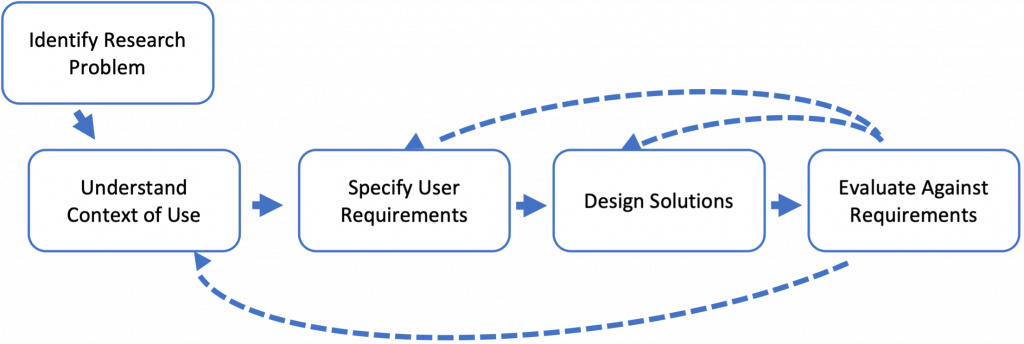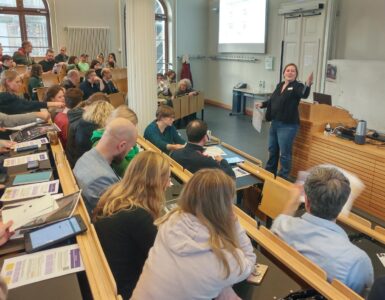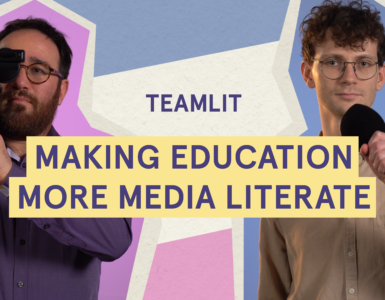It has become cliché to talk about the rapid and disruptive changes facing higher education (HE). The new circumstances of the Covid-19 pandemic have only amplified the very predictable commentary on the digital transformation of HE. Increasing partnerships between the Educational Technology sector signals both growing opportunities and challenges for integrating emerging technologies into learning environments. As the evolution of immersive technologies, commonly referred to as extended reality (XR), covering virtual, augmented, and mixed reality, becomes both more efficient, accessible and affordable on a daily basis, new models of teaching and learning are taking shape. Given the continuous developments in XR, the allure for learning design teams for impacting teaching and learning escalates with every passing academic year.
Although it is no longer a new phenomenon, the exploration of XR’s potential in higher education demonstrates a wide range of both challenges and opportunities. Although many institutions have experimented with the introduction of XR in the classroom with the aim of enhancing learner motivation and achievement, particularly in the STEM disciplines, there still remains considerable barriers such as access, affordability, lack of content, infrastructure, and tech support.
Given the elevation of XR in education and the wider society, our research team posed some questions about the role of immersive technologies in new models of blended, hybrid, or fully online higher education. With an active and student centred model of learning in mind, we asked how a user-centred design process can be used to design and develop augmented reality (AR) applications which optimise student learning in blended and hybrid course settings?
The goal of the current study was to formulate design and development requirements for an AR based mobile application. AR is defined as linking digital information to specific activities or locations in the physical world. It became popular through the video game Pokeman Go and a common AR experience involves overlaying virtual content onto the user’s view of the physical world as seen through their mobile phone.
In line with a student-centred model of learning, we have followed a user-centred design (UCD) process, similar to the ADDIE model for instructional design. A UCD process implies ensuring that users and their context are taken into account from the beginning of the design process and throughout the iterative design lifecycle. After identifying a clear research problem, the general UCD process involves four phases as outlined in Fig. 1. In order to ensure an effective design which meets the needs of students, an educational scenario review was developed as a preliminary evaluation technique.

Understanding the context of use is an essential step in order to identify design requirements and clearly outline learning objectives and goals for the AR technology. Highlights from the educational scenario review phase include:
- (A) Creating Personas which supported the design process by understanding learners’ interests, problems and needs better. A persona is a composite representation of a typical student in a specific educational setting. The persona has allowed us to make better decisions about the key design features including navigation, interactions, user interface and visual design, among other features.
- (B) AR Educational Scenario Review: In this phase, we asked how students will use the AR application? We aimed to specify the broader educational contexts of use and scenarios of interaction to show how learners might act to achieve a certain goal within the AR environment.
Our team developed a Scenario Review Protocol which may be useful for other learning design teams as they begin development of immersive technologies.
- Describe specific learning activity where AR resources will be integrated. What will students need to do while using the AR resource?
- What is the motivation for using AR as a learning resource and wow does it respond to student needs?
- What knowledge and skills will be developed within the immersive environment?
- How do the knowledge/skills developed in the immersive environment integrate with what is being taught in the rest of the course?
- What is the learner expected to and what is possible to learn through the presence of the AR resource?
- Learner environment: Where does the interaction take place?
- Medium: What device and technologies will the student be using?
Our research aimed to contribute to the debate about how XR technologies can elevate student learning in HE, and in particular, the role of user centred design in this process. UCD evaluation techniques presented in this study, such as personas and scenario reviews, offer an approach that allows research teams to capture an evaluation perspective which explores and identifies the design requirements and the feasibility of the AR development.
The ultimate aim is to bring alignment to the design of mobile learning applications, learning tasks and desired learning outcomes, an important step for catalysing XR integration in HE, with the ultimate goal of optimizing student learning and achievement.
Source: Toward A User-Centred Design Approach for AR Technologies in Online Higher Educationhttps://ieeexplore.ieee.org/abstract/document/9459409/authors#authors

Author
Post-Doctoral Researcher, eLearn Center, UOC (Universitat Oberta de Catalunya)














